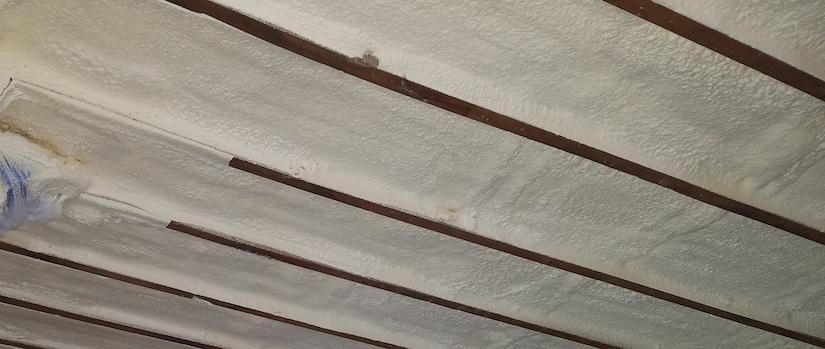- Residential
- Commercial & Municipal
- Building Consulting

Depending on the age of a building and the conditions we find during air barrier testing or repair, we will sometimes suggest insulating as another way to improve energy efficiency and occupant comfort.
Although it usually does not have the same level of return on the investment, a properly insulated building will show decreases in energy cost and improve the performance of HVAC equipment.
Not all insulation is created equal. As part of the process, we will help you understand the benefits of the different types of insulation available, and those that fit best for your particular project. We believe all types of insulation can work well if installed properly. We will work with you to install a product that both fits your needs and financial goals.

ATTIC OF A MULTIFAMILY BUILDING- INSULATED TO R50 WITH CELLULOSE
Cellulose Insulation
Cellulose Insulation is made from recycled wood fiber, primarily newspaper. Specifically treated and processed, cellulose fiber is light and fluffy. The natural characteristics of cellulose traps air within and between the fibers, providing superior insulating qualities.
It can be “dense packed” in confined space under high pressure to create a solid mass with the highest R-value. When blown into place under a specially designed high pressure installation process, the tiny cellulose fibers flow around pipes and wiring, sealing cracks and corners, forming a felt-like bond.
Cellulose insulation provides complete coverage, blocking more air infiltration, keeping your interior environment more consistent while using less heating or cooling energy. Cellulose insulation is usually the best, most efficient, safest, healthiest and cost effective insulation for your home or commercial building.
2-Part Foam
- Often called spray foam. Comes in a higher R-value closed cell version and also a lower R-value opend cell form. Both are an effective and often considered superior form of insulation.
- This is a polyurethane product that clings to and expands on the surface onto which it is sprayed.
- It is good for difficult and hard to reach spaces.
- As it expands, it tends to fill gaps and cracks, improving the air barrier. This is due to the ability to seal gaps and cracks while insulating with one product.
Fiberglass
- Fiberglass, although popular, is the least valuable of the options available. It only works effectively in an airtight six-sided box - 4 sides, a top, and a bottom. It only gets about one quarter of the insulating R-value when it is in an open space because the air is able to move through it easily. It is the air in it that does the insulating.
- Unlike cellulose and 2-part foam, fiberglass does not cover the area as well, allowing cracks and gaps which allow heat to leak through. Similarly, fiberglass does not have the structure to prevent air flow. It is used as a filter in some cases, such as cigarette filters and furnace filters.
Contact us
Testimonials
I wanted to thank you for the air testing and thermography testing you recently completed for us at the US Armed Forces Reserve Center at the Letterkenny Army Depot in Chambersburg, PA. Both yourself and your onsite staff were very considerate of our needs working in and around a project that... Read more
Timothy R. Phipps, Senior Project Manager, Lobar, Inc.
